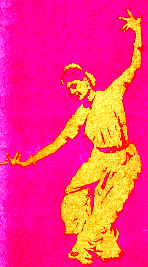|
|
Another major element of classical Indian dance is called Abhinaya, which broadly means expression.
This is achieved through four means:
Angika, the body and limbs
Vachika, song and speech
Aharya, costume and adornment
Satvika, moods and emotions
Much, however, is also left to the imagination of the beholder, and for this reason suggestion and symbolism play a vital role in Indian classical dance.
Then the dancer, on his part, is expected not only to create or project moods and feelings, but also to evoke similar responses in the beholder.
All of which explains why, in Indian tradition, the rasikas of members of the audience, are expected to be as familiar with the technique as the dancers themselves.

|
|

